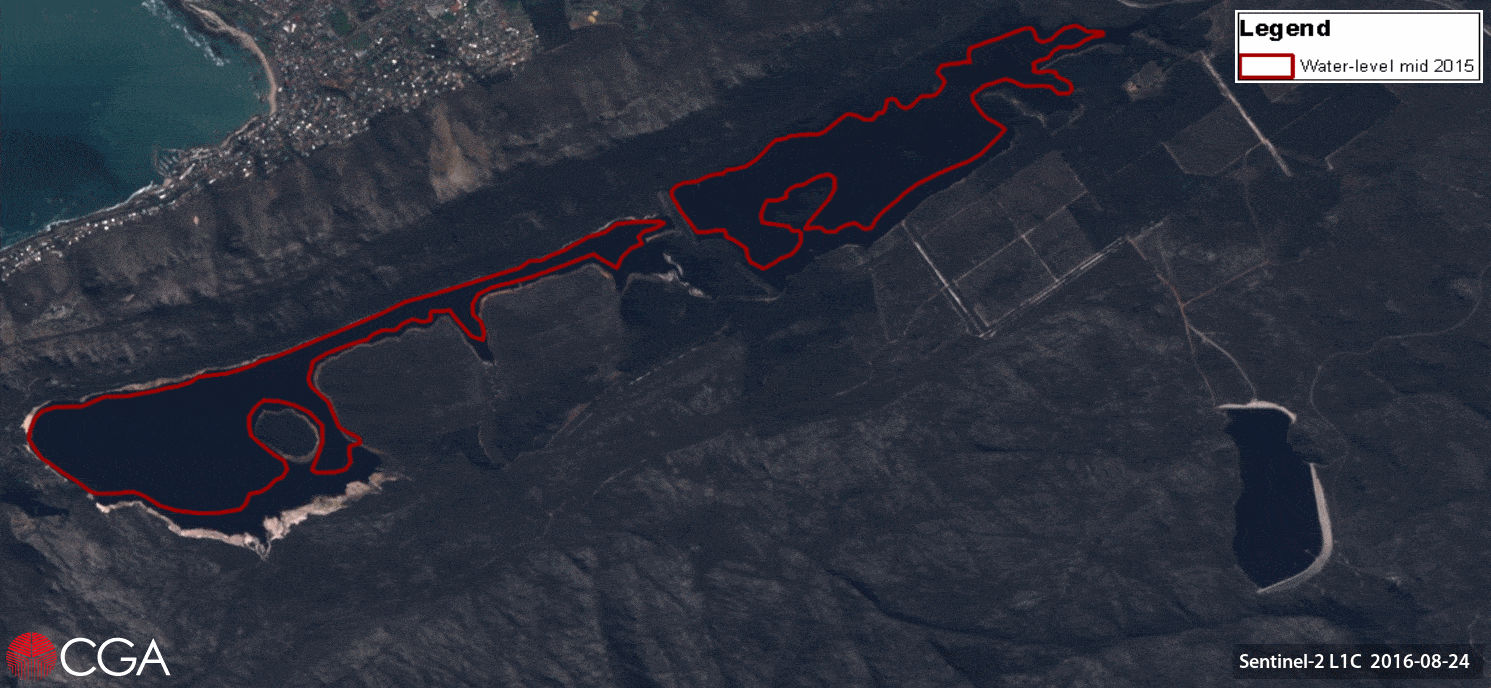In support of the efforts to alleviate the water shortage in the Cape Town region, the CGA is releasing a satellite image time-series of the main dams that supply the City of Cape Town and surrounds with potable water. The images show each dam’s highest water level in 2016, progressing through the summer season to the current low levels.
The majority of the water in Cape Town is supplied by six large dams located east of the city in the Cape Fold Mountains, and include Theewaterskloof, Voëlvlei, the Berg River, Wemmershoek, and the Upper and Lower Steenbras dams. The ownership and management of the water supply are shared between the Department of Water and Sanitation and the City of Cape Town.
In 2009, a study by the Department of Environmental Affairs estimated that the demand on these dams would exceed its supply by 2019. The study also predicted that shortages would occur prior to 2019 if the rainfall was lower than expected and water conservation efforts were not as successful as foreseen.
Numerous additions to increase capacity and create a larger supply are being considered, including the heightening of dam walls, new water transfer schemes, and seawater desalination.
The first satellite image time-series is of the Steenbras Dams, an earth-fill type dam that used to be the main water reservoir for Cape Town during the first half of the twentieth century. The Steenbras Dams is situated on the slopes of the Hottentots Holland Mountains above Gordons Bay, on the Steenbras River, which has a low sediment load and provides high-quality water. Completed in 1921 and renovated in 1989, the Steenbras Dams has a total capacity of about 33 517 000 m3 and a wall height of 28 m, and covers an area of 380 ha.

